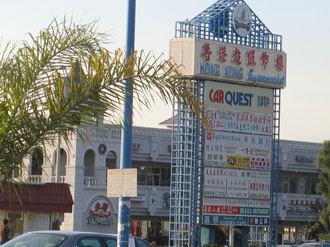In about two dozen U.S. cities a generation of Asian Americans is reaching adulthood with scant knowledge of what it’s like being a racial minority.
Little surprise that most such cities are in Hawaii. But nine are in California: Monterey Park, Cerritos, Walnut, Milpitas, Rowland Heights, Cupertino, Arcadia, Rosemead and Daly City. There is even one in Pennsylvania: Millbourne, a borough of barely a thousand residents skirting Philadelphia.
Recently, Cupertino joined Westminster and Monterey Park as one of only three mainland cities to have an Asian-majority city council.
Such cities are noteworthy mainly because they provide exceptions to the minority status that is a fact of life for perhaps 90% of us Asian Americans. Yet the attitudes and perceptions of those who grow up in these Asian enclaves may come to have undue influence over the Asian American discourse in coming decades.
Consider a young Asian American who grew up in a place like Monterey Park, Milpitas or Walnut, then went to a university like UC Berkeley, UCLA or UC Irvine where Asians outnumber Whites. They would reach adulthood with every reason to question the experiences of Asian Americans who grew up suffering racial prejudice. They would likely deny experiencing any such prejudice at all, serving as fodder for the arguments of those who question the significance or even the reality of racial prejudice.
Even more interesting will be the experiences of the Asian-majority generation once they leave the cocoons of their formative years. As they come face to face with the racial issues from which they were insulated during the first two decades of their lives, would they find themselves exceptionally vulnerable due to their lack of coping mechanisms? Would they continue to deny that they are experiencing racial prejudice? Or would they become extremely outraged at being confronted with unpleasantness they thought had died out with CRT monitors and dialup connections?
Their experiences will serve as a preview of what many more of our children and grandchildren will experience in the new decade as more cities with mere Asian pluralities shift into the Asian-majority column.

